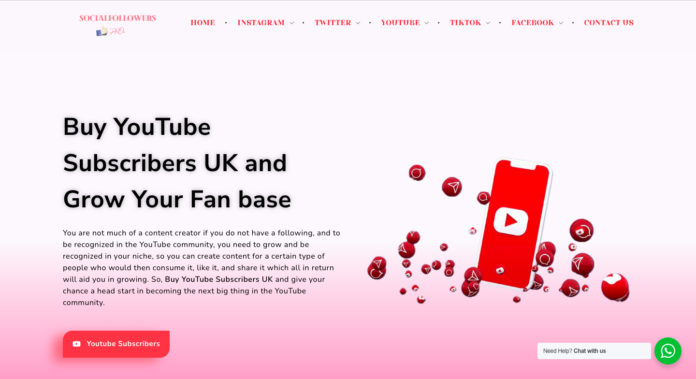Creating educational videos on YouTube has become an increasingly popular way for individuals to share their knowledge and expertise with a global audience. Whether you are passionate about science, history, mathematics, or any other subject, YouTube offers an accessible platform to engage and educate viewers from all walks of life.
In this article, we will explore the process of creating educational videos on YouTube, providing valuable insights and tips on how to effectively plan, film, edit, and optimize your content. Whether you are an educator, a professional in a specific field, or simply someone passionate about sharing knowledge, this guide will equip you with the tools and strategies to create engaging and impactful educational videos that resonate with your audience.
Introduction to Educational Videos on YouTube
Creating educational videos on YouTube is a fantastic way to share your knowledge and passion. YouTube has become a go-to platform for learning, and by joining this community, you can contribute to the vast pool of educational content available online. Whether you’re an expert in science, history, mathematics, or any other subject, you have the power to make learning engaging, accessible, and enjoyable through video.Read more
Benefits of Creating Educational Videos on YouTube
There are numerous benefits to creating educational videos on YouTube. First and foremost, you get to make a difference in people’s lives by sharing valuable information and helping them learn something new. Your videos have the potential to inspire and motivate learners of all ages, creating a positive impact on their educational journey.
Moreover, YouTube provides an opportunity to reach a vast audience. With billions of users, your educational videos can be accessed by people around the globe, making it possible to share knowledge and insights with diverse communities. Additionally, YouTube’s algorithm and search features make it easier for your content to be discovered by those interested in your subject matter.
Lastly, creating educational videos on YouTube allows you to showcase your expertise and build a personal brand. As your channel grows, you can establish yourself as a trusted source of knowledge, opening doors for collaborations, speaking engagements, and other exciting opportunities.
Understanding the Potential Reach and Impact of YouTube
YouTube is more than just a platform for cat videos and funny clips (although those are great, too!). It has become a powerful educational tool. People turn to YouTube to learn new skills, find explanations for complex concepts, and explore various subjects. The platform has democratized education and made it accessible to anyone with an internet connection.
YouTube’s potential reach and impact are staggering. According to YouTube, over a billion hours of video are watched daily on the platform. Your educational videos could potentially reach millions of viewers worldwide. By leveraging YouTube’s features, such as tags, titles, and thumbnails, you can optimize your content and increase your target audience’s chances of it being discovered.
YouTube’s engagement features, such as comments and likes, also allow you to connect with your viewers and create a community of learners. The ability to interact directly with your audience adds another layer of value to your educational content, as you can address their questions, provide additional resources, and foster a sense of belonging.
In short, YouTube provides a unique opportunity to impact education by creating engaging and accessible educational videos. So why grab a camera and start sharing your knowledge with the world?
Choosing a Subject: Science, History, Mathematics, or Any Subject of Expertise
When choosing a subject for your educational videos on YouTube, the possibilities are endless. You can delve into any field you’re knowledgeable about and passionate about. Whether science, history, mathematics, or any other subject, there’s an audience hungry for knowledge.
Identifying Your Area of Expertise and Passion
To choose the right subject for your educational videos, identify your expertise and passion. What issue do you have extensive knowledge and experience in? What topic makes you light up with excitement? Identifying your knowledge and passion is crucial because it will fuel your motivation and ensure that you genuinely enjoy creating content on that subject.
Remember, your enthusiasm will shine through in your videos, making them more engaging and enjoyable for your audience. So, whether you’re a science whiz, a history buff, a math wizard, or a master of any other subject, embrace it and share your expertise with the world.
Evaluating the Demand and Popularity of Different Subjects
While choosing a subject you’re passionate about is essential, it’s also worth considering the demand and popularity of different topics. Research which issues are currently trending or in high order on YouTube. This doesn’t mean you should solely focus on the most popular subjects, but understanding the market can help you target your content to the right audience and increase your chances of reaching a more extensive viewership.
Consider exploring niche topics as well. These can attract a dedicated audience with a specific interest in that subject. While the potential reach might be smaller, the engagement and loyalty from your viewers might be higher.
Ultimately, finding the right balance between your expertise and the demand in the market will help you create educational videos that resonate with your audience while allowing you to explore your passion.
Planning and Researching Content for Educational Videos
Once you’ve chosen a subject, it’s time to dive into the planning and researching phase. This step is crucial for creating high-quality educational videos that offer real value to your audience.
Defining the Learning Objectives and Goals of Your Videos
Before you start creating content, define your videos’ learning objectives and goals. What do you want your audience to learn or take away from each video? Clear objectives will help you structure your content and ensure it’s focused and impactful. It will also help you assess whether your videos achieve their intended purpose.
Whether you want to explain a complex scientific concept, provide historical context, or teach a math formula, ensure your learning objectives are specific and measurable. This will let your viewers track their progress and know what they can expect from your videos.
Conducting Thorough Research on the Chosen Topic
Thorough research is essential for creating accurate and credible educational videos. Dive deep into your chosen topic, explore different sources, and gather reliable information. This will help you present well-rounded content and comprehensively understand the subject matter.
Keep in mind that research is an ongoing process. Stay updated with your field’s latest advancements, theories, and discoveries. By staying informed and continuously expanding your knowledge, you can ensure that your educational videos remain relevant and up-to-date.
Organizing Your Content and Creating an Outline
With your learning objectives and research, it’s time to organize your content and create an outline. This step will help you structure your videos and ensure a logical flow of information.
Break down your topic into smaller sections or subtopics. Arrange them in a sequence that makes sense and builds upon each other. This will help your audience follow along smoothly and grasp the concepts more quickly.
Creating an outline also allows you to identify gaps in your knowledge or areas requiring further research. By addressing these gaps and structuring your content effectively, you can create educational videos that are both informative and engaging.
Scripting and Structuring Your Video Lessons
Now that your content is planned and organized, it’s time to bring it to life through scripting and structuring your video lessons.
Writing Engaging and Clear Scripts for Your Lessons
Writing a script for your video lessons is essential for delivering information concisely and engagingly. Keep your language clear, simple, and jargon-free. Write as if you’re conversing with your viewers, making the content relatable and easy to foster Engagement with Your Educational Channel.
Filming and Editing Techniques for YouTube Educational Videos
Setting up the Right Equipment and Environment for Filming
Lights, camera, action! Before you hit record, it’s essential to ensure you have the right equipment and environment for filming your educational videos. Invest in a good quality camera, tripod, and lighting setup to capture clear, professional-looking footage. Additionally, consider your filming location – ensure it’s well-lit, quiet, and free of distracting backgrounds. No one wants to watch a science lesson with a messy bedroom in the environment!
Capturing High-Quality Audio and Video Footage
High-quality audio and video footage are crucial to creating engaging educational videos. Use a microphone or lapel mic to ensure clear sound recording, and pay attention to your voice modulation and enthusiasm while speaking. Make sure you’re in focus and well-framed in the shot for the video. Nobody wants to strain their eyes trying to decipher what you’re pointing at off-screen!
Editing and Enhancing Your Videos for Maximum Impact
Once you have all your footage, it’s time to edit and enhance your videos to maximize their impact. Use video editing software like Adobe Premiere Pro or iMovie to trim unnecessary parts, add transitions, incorporate text overlays, and even include graphics or animations to make your content more visually appealing. Remember, editing magic can go a long way in keeping your viewers engaged.
Optimizing Video SEO and Attracting Viewers
Understanding YouTube SEO and How it Works
While creating fantastic educational content is crucial, it won’t do much good if no one can find it. That’s where YouTube SEO comes into play. Understanding how YouTube’s search algorithm works can help you optimize your video titles, descriptions, tags, and thumbnails to increase visibility and attract more viewers. Think of it as unlocking the secret code to YouTube success!
Utilizing Keywords and Metadata for Discoverability
Keywords are the secret sauce of YouTube SEO. Research popular keywords related to your educational niche and incorporate them strategically in your video titles, descriptions, and tags. Remember to fill out the metadata fields, such as category, location, and language, to provide more context to YouTube’s algorithm. The more specific you are, the better your chance of reaching the right audience.
Promoting Your Videos through Social Media and Collaborations
Don’t be shy about promoting your educational videos! Share them on your social media platforms, such as Facebook, Twitter, and Instagram, to extend your reach beyond YouTube. Collaborate with other educational content creators or experts in your field to cross-promote each other’s videos and tap into their existing audience. Remember, the more people see your videos, the more knowledge you can spread!
Engaging and Interactive Elements in Educational Videos
Incorporating Quizzes, Polls, and Interactive Annotations
Who said learning can’t be fun and interactive? Spice up your educational videos by incorporating quizzes, polls, or interactive annotations. Pause the video and ask your viewers a multiple-choice question related to the topic you’re discussing. It tests their knowledge and keeps them actively engaged throughout the video. Plus, it’s a great way to make them feel like they’re part of the learning process.
Encouraging Audience Participation and Feedback
Your viewers are more than passive spectators; they can be valuable contributors to your content. Encourage audience participation by asking them to share their thoughts, opinions, or personal experiences related to the topic in the comments section. Engage with their comments, answer their questions, and create a community around your videos. After all, education is a two-way street!
Using Captions, Transcripts, and Non-Visual Accessibility Features
Accessibility is essential when creating educational content. Make your videos inclusive by providing captions or transcripts for those with hearing impairments or who prefer reading along. Use non-visual elements, such as descriptive audio or tactile demonstrations, to cater to visually impaired viewers. By making your content accessible, you’re opening the doors to knowledge for a wider audience.



![6 Reasons Why Instagram Blocks You. To-Do Actions if You Get Banned [Updated][2020 Latest]](https://maxternmedia.com/wp-content/uploads/2020/01/7ACDBCB4-D563-47A2-A3B4-A2EF820A23BC-100x70.jpeg)

